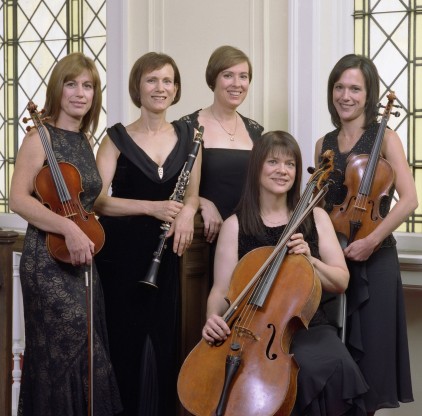Orion Ensemble brings heartfelt lyricism to contrasted works

The gifted Orion Chamber Ensemble, now in its 16th season, rarely settles for predictable programming. To open their most recent set of concerts in Geneva, Evanston and Chicago they performed a quartet for clarinet, violin, viola and cello by Heinrich Baermann, a virtuoso clarinetist of the early 19th century who was also a composer. Second on the program was a 2001 work by Chicago composer Robert Kritz, Connections for clarinet, violin, viola, cello and piano. Only with the final work, Tchaikovsky’s grandly scaled Piano Trio, did they venture into standard repertoire.
But the ensemble’s programs always have a clear organizing principal. Their performance Wednesday in Roosevelt University’s Ganz Hall was suffused with a heartfelt lyricism utterly appropriate to each piece. It was fascinating to hear the way composers spanning nearly two centuries responded to the ages-old urge to create singing melodies.
The Orion is a remarkably cohesive ensemble. Three of the players—clarinetist Kathryne Pirtle, violinist Florentina Ramniceanu and pianist Diana Schmück–are founding members. Cellist Judy Stone joined in 1995, and violist Jennifer Marlas completes the roster. Alert to each other’s phrasing, they played with the unison drive that is a hallmark of musicians who know one another well.
Kritz wrote Connections for the Orion, and in addition to giving the world premiere in 2001, they have recorded it on a disc titled “A Celebration of American Chamber Music.’’ On Wednesday night they sounded completely at ease as its moods shifted from quiet introspection to jazzy honky-tonk with many stops in between.
Written in three movements, Connections is full of playful moments, and there is nothing faintly pedantic about this score. But Kritz has a gift for catchy melodies, and it was a treat to follow along as he put them through their paces. Classical music program notes often bristle with scholarly analysis telling us how a composer develops a melody here or breaks it into fragments there. Often it’s very difficult to catch those moments, especially on first hearing. In Connections, however, because the melodies and their rhythmic shapes were so distinctive, we were able to watch the process unfold.
We could actually hear Marlas’ viola set out a brooding motif and recognize it turning into something brighter and more benign as the others passed it around. We could enjoy the unexpected interplay of off-kilter harmonies and unpredictable melodies because familiar ones kept bubbling up to help us keep our bearings. Schmück was a virtuoso of multiple styles in the piece, including sophisticated lounge-lizard jazz and toe-tapping honky-tonk.
Led by Pirtle’s velvety, seamless clarinet, the Orion sounded warm and ardent in Baermann’s romantic B-Flat Major Quartet, Op. 18. Spinning through dizzying ornamental flights, Pirtle’s tone was commanding. But she never overwhelmed the equally powerful voices of the quartet’s violin, viola and cello.
Tchaikovsky’s A Minor Trio unfurled with heroic sweep and vibrant color. Stone’s dark cello was flexible and expressive in the opening melody, underscored by Schmück’s restless, undulating piano. In the second movement, a set of theme and variations, Ramniceanu’s bright violin raced effortlessly through Tchaikovsky’s challenging, leaping arpeggios.
Posted in Performances




